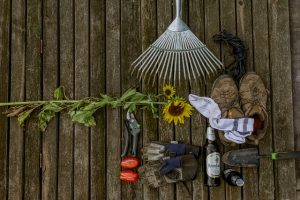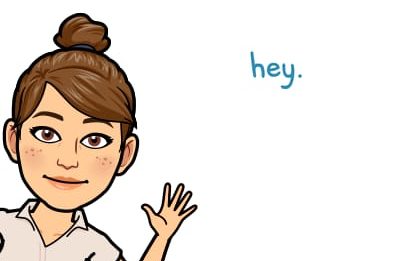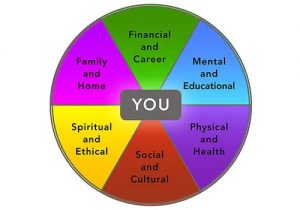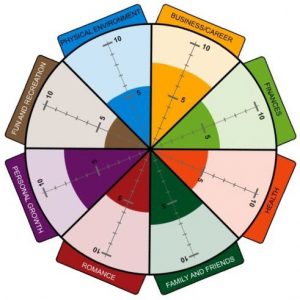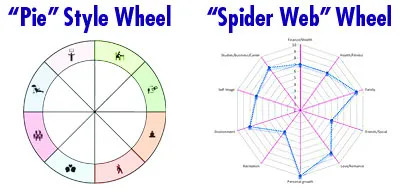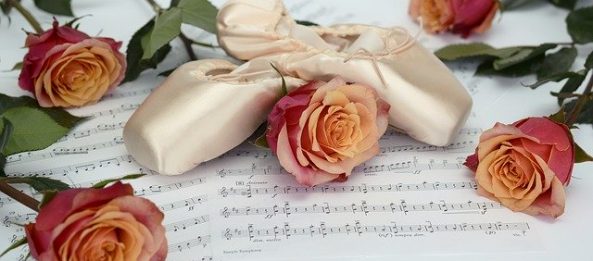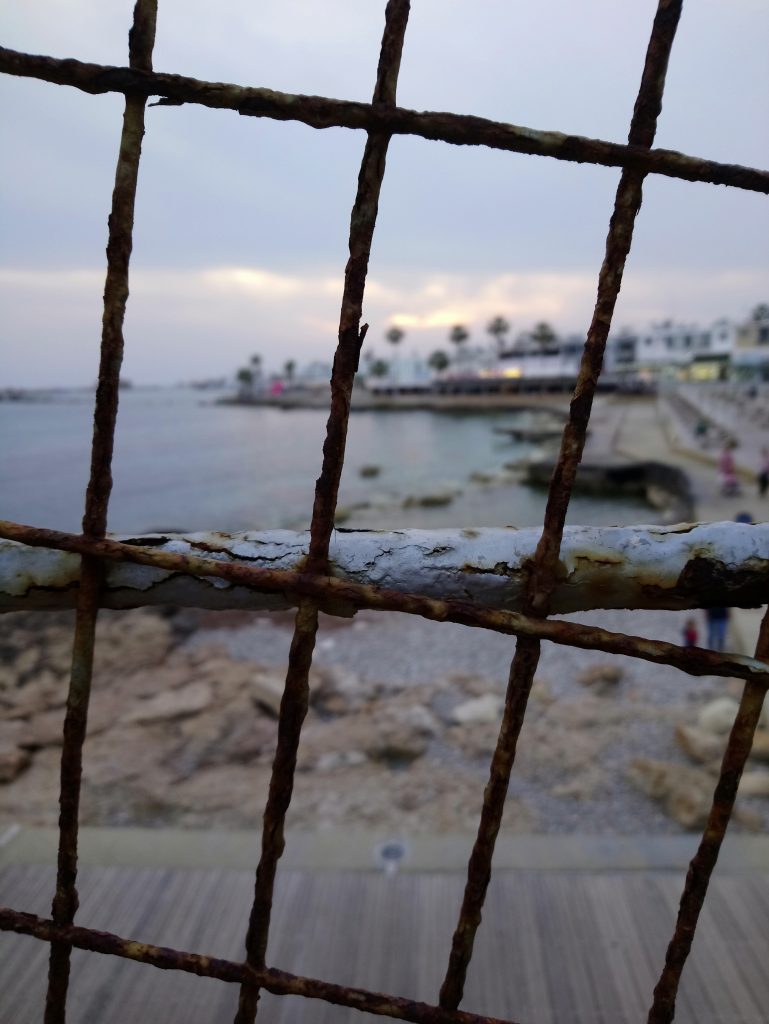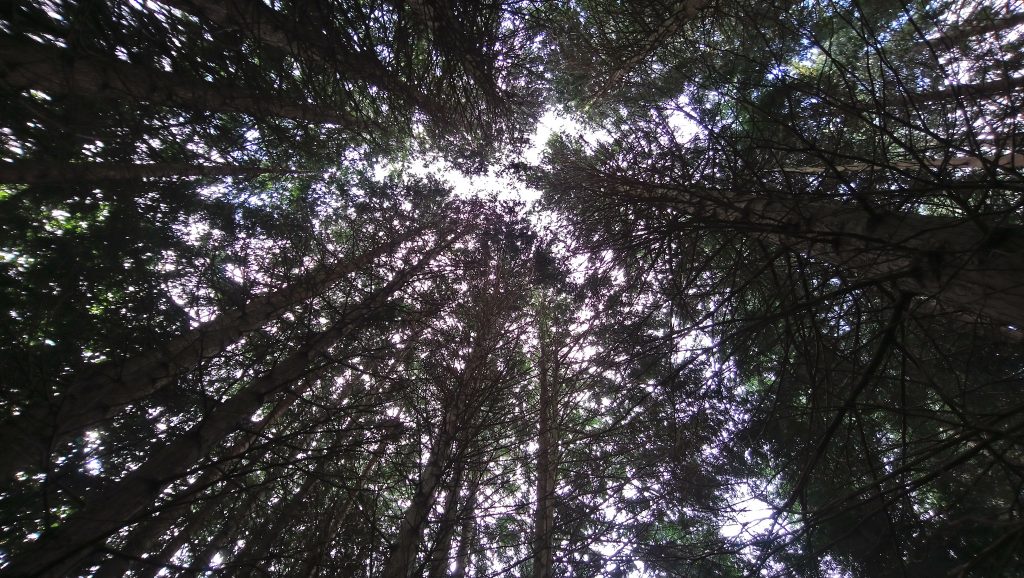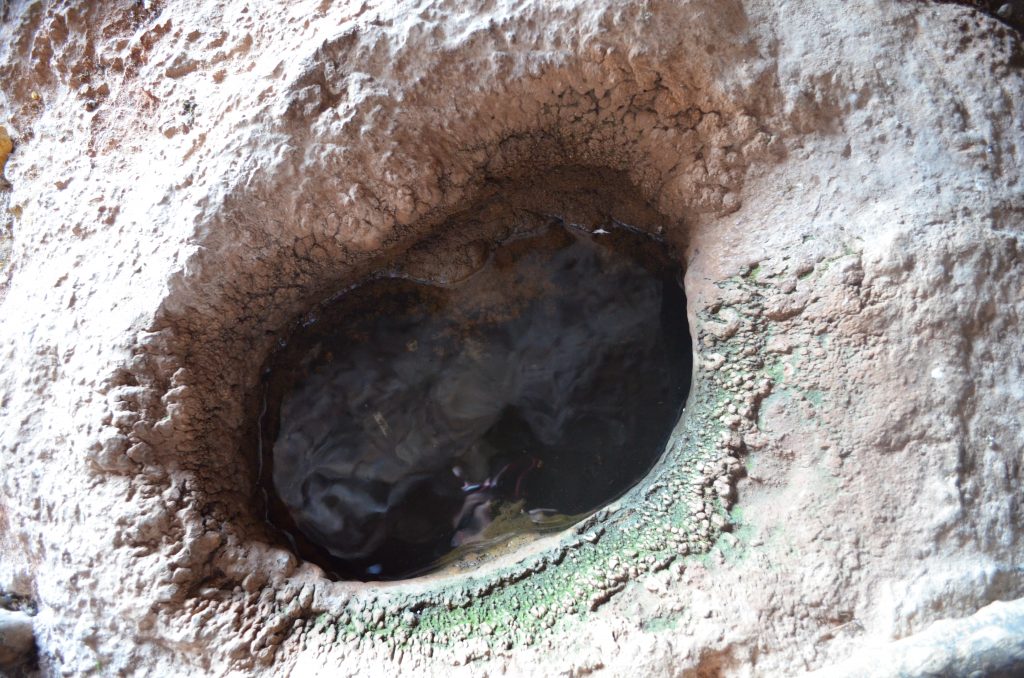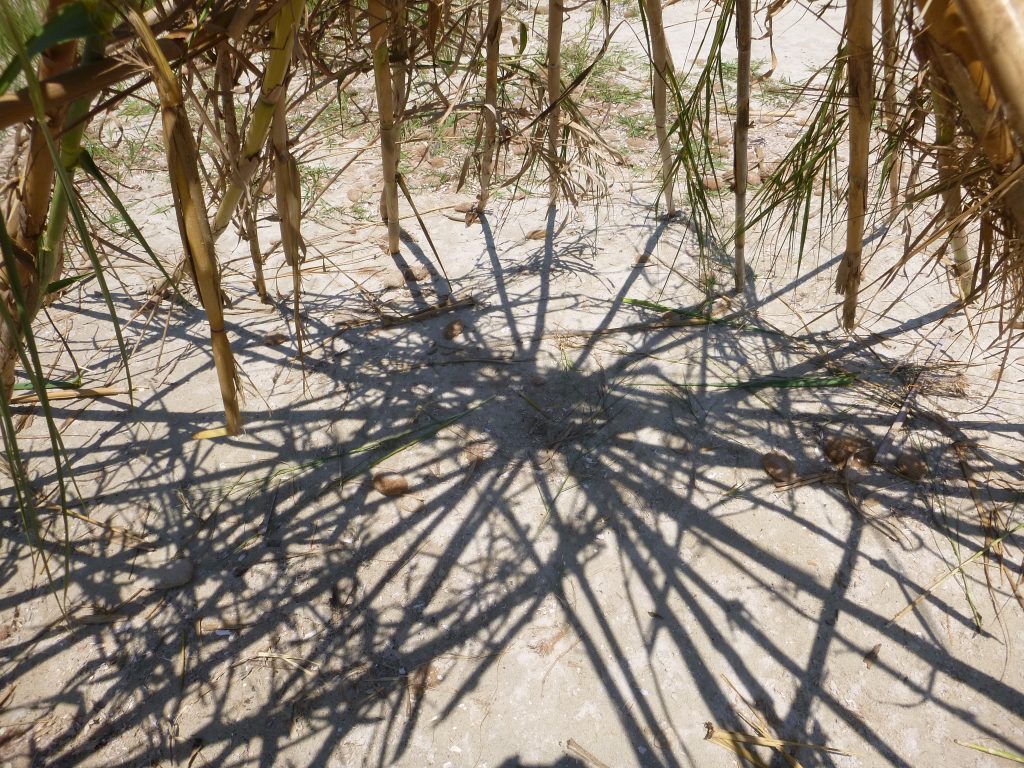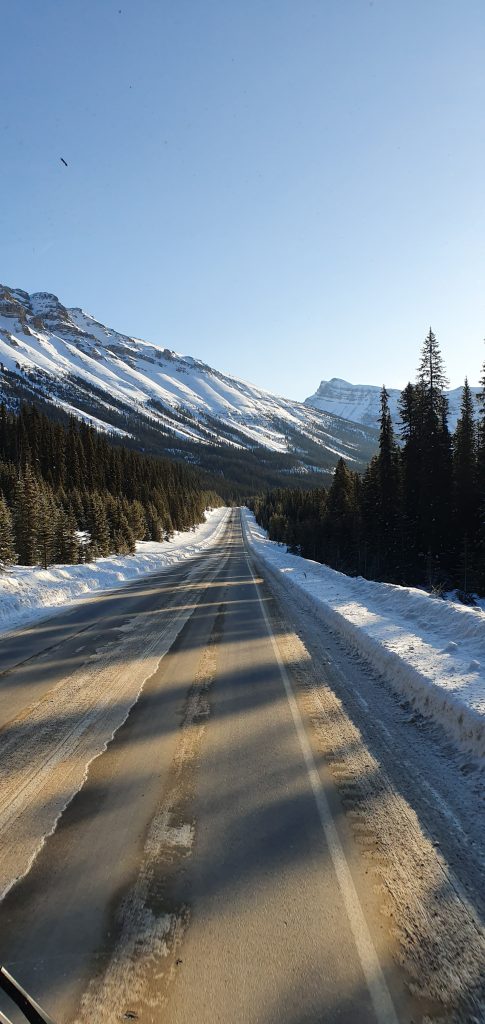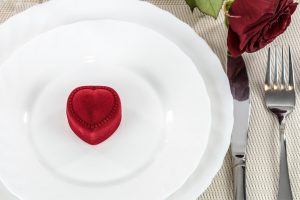It’s been tidier, everywhere, here. I mean, normally they encroach on any area of vulnerability, the small, frail, tender and new. Anything emergent. This was seen as usual until recently. We have the new normal, the aged, depleted and compromised, and like before it is often someone we could identify if we ever saw them or spoke to them, types who are more likely to suffer. But in the main people have been put away, stored for their own good, shielded; we’ve been obedient, compliant and safe. But there are still junctions that allow us to fraternise. That’s what the plot is, an edge, a vantage point, a hide? Where we can look.
 Like any point that can be occupied, it has a defined area and edges, although faces might be more visual. These surround the centre of the plot and can be defined, or limited or, apparently, infinite. At least your eye could just keep travelling infinitely upward, but be under no illusion – the plot has limits. For a start, you can only really see things one way. When you look at something, you’re not looking at something else. Or is that a limitation in us and not the plot? I guess how this limitation changes us could only really be tested if we were like, maybe, ducks, with eyes on the side of our heads, or maybe the compound eye of a fly or nine eyes in or across our back. Anyway, within the plot, we are with our two eyes placed in parallel mounted on the front of our face giving us stereoscopic vision, and we have the element of time allowing for movement. Particularly rotation – the capacity to look different ways and then remember what we’ve seen before. But do we remember, or does what we see in the immediate downgrade our memory? Should I have asked this?
Like any point that can be occupied, it has a defined area and edges, although faces might be more visual. These surround the centre of the plot and can be defined, or limited or, apparently, infinite. At least your eye could just keep travelling infinitely upward, but be under no illusion – the plot has limits. For a start, you can only really see things one way. When you look at something, you’re not looking at something else. Or is that a limitation in us and not the plot? I guess how this limitation changes us could only really be tested if we were like, maybe, ducks, with eyes on the side of our heads, or maybe the compound eye of a fly or nine eyes in or across our back. Anyway, within the plot, we are with our two eyes placed in parallel mounted on the front of our face giving us stereoscopic vision, and we have the element of time allowing for movement. Particularly rotation – the capacity to look different ways and then remember what we’ve seen before. But do we remember, or does what we see in the immediate downgrade our memory? Should I have asked this?
Because where we are now in the plot? Our plot seems quite overwhelming. I’m engaged with a cone of experience that projects from me. I move, it moves, the world shimmies. Suddenly I have neighbours. How do they operate? Do we speak? Do I engage? Do we both? When we do engage, it seems better to me – at least richer. I watch them unfold, and, if they engage with me, we find ourselves dancing, shadowing, allowing. Some information sticks: his face, how I placed my tools? Where they’re from? But not their name or the distance thing. Did I step too close? When they’ve moved on, I am no longer engaged, but I construct them. He: big head almost as wide as his shoulders, quilted jacket, curly hair, eyes like black olives, teacher, political, funny. She: scatty, frizzy ball on a cone. Arms gesticulating, jointed? Teacher, geography, Tallis, thinks she had the virus. Agree on everything with them or at least everything we say.
The dances with other neighbours are different, but the scorecards reveal after the event.
A phrase:
’Work in telly’ and I’m split. Part of me says.
 ’What does he do?’ Yeah he looks like an editor. Another part continues to weed and dig the border. I don’t ask for detail, just as I don’t ask her is she scared? Because I know it puts me in the wrong territory. I must not be too interested. We are allowed to compare our plots, but with self critical amusement and irony, and without actually saying what we think. He is jumpy, small head, suspicious, thinks I’m going to be too close to his beloved. She, girlish, frail, dry dark humoured, has the air of not-quite-dead crow, road kill, limping but bright-eyed and sharp, able to forage and possibly exaggerating her gait. Her mask is medical grade, not cheap disposable, no full PPE filter. She takes pride in it.
’What does he do?’ Yeah he looks like an editor. Another part continues to weed and dig the border. I don’t ask for detail, just as I don’t ask her is she scared? Because I know it puts me in the wrong territory. I must not be too interested. We are allowed to compare our plots, but with self critical amusement and irony, and without actually saying what we think. He is jumpy, small head, suspicious, thinks I’m going to be too close to his beloved. She, girlish, frail, dry dark humoured, has the air of not-quite-dead crow, road kill, limping but bright-eyed and sharp, able to forage and possibly exaggerating her gait. Her mask is medical grade, not cheap disposable, no full PPE filter. She takes pride in it.
The newbies, one man and his puppet child, clearly get in everything including the way. He feints inexperience. But clearly does it by the book. Each day he leaves a neat illustration from the Readers Digest Home Garden Manual, down to the fork and sacking bookend. As the weeks pass, his master plan emerges: bamboo palaces, pyramids and teepees, dust surrounding de-potted seedlings, bought already striving.
The plots surround and jostle for attention. Further back, they fall into types; the diggers, the builders, the ornamentalists and then the warden.
He who watches. His plot immaculate, admired. Everyone knows his name. He decides: strimmer or not? Tidy your plot border. Even an email reminding us not to allow those from other households on our plot, because it had come to his attention that someone was bringing visitors to the site. Yes, and avail yourself of the sanitiser, with rigour to hands and handles, at the beginning of your time with us and at the end.
Secretly, his perfection rubs me up the wrong way. I intentionally choose to plant my plot without a rectangular grid. My planted areas include curves, and I frequently deviate from the mono cultured rows. Every little poke gives me a little more pleasure, and I hope he somehow knows it and resents it.

Ian Macnaughton,
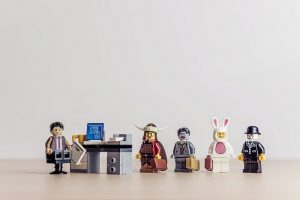
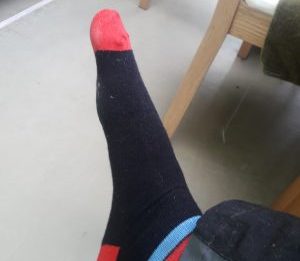
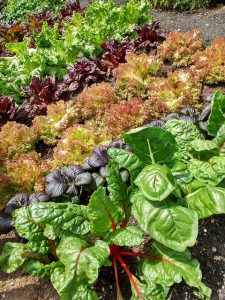 Like any point that can be occupied, it has a defined area and edges, although faces might be more visual. These surround the centre of the plot and can be defined, or limited or, apparently, infinite. At least your eye could just keep travelling infinitely upward, but be under no illusion – the plot has limits. For a start, you can only really see things one way. When you look at something, you’re not looking at something else. Or is that a limitation in us and not the plot? I guess how this limitation changes us could only really be tested if we were like, maybe, ducks, with eyes on the side of our heads, or maybe the compound eye of a fly or nine eyes in or across our back. Anyway, within the plot, we are with our two eyes placed in parallel mounted on the front of our face giving us stereoscopic vision, and we have the element of time allowing for movement. Particularly rotation – the capacity to look different ways and then remember what we’ve seen before. But do we remember, or does what we see in the immediate downgrade our memory? Should I have asked this?
Like any point that can be occupied, it has a defined area and edges, although faces might be more visual. These surround the centre of the plot and can be defined, or limited or, apparently, infinite. At least your eye could just keep travelling infinitely upward, but be under no illusion – the plot has limits. For a start, you can only really see things one way. When you look at something, you’re not looking at something else. Or is that a limitation in us and not the plot? I guess how this limitation changes us could only really be tested if we were like, maybe, ducks, with eyes on the side of our heads, or maybe the compound eye of a fly or nine eyes in or across our back. Anyway, within the plot, we are with our two eyes placed in parallel mounted on the front of our face giving us stereoscopic vision, and we have the element of time allowing for movement. Particularly rotation – the capacity to look different ways and then remember what we’ve seen before. But do we remember, or does what we see in the immediate downgrade our memory? Should I have asked this?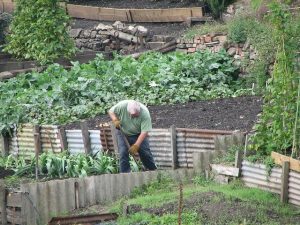 ’What does he do?’ Yeah he looks like an editor. Another part continues to weed and dig the border. I don’t ask for detail, just as I don’t ask her is she scared? Because I know it puts me in the wrong territory. I must not be too interested. We are allowed to compare our plots, but with self critical amusement and irony, and without actually saying what we think. He is jumpy, small head, suspicious, thinks I’m going to be too close to his beloved. She, girlish, frail, dry dark humoured, has the air of not-quite-dead crow, road kill, limping but bright-eyed and sharp, able to forage and possibly exaggerating her gait. Her mask is medical grade, not cheap disposable, no full PPE filter. She takes pride in it.
’What does he do?’ Yeah he looks like an editor. Another part continues to weed and dig the border. I don’t ask for detail, just as I don’t ask her is she scared? Because I know it puts me in the wrong territory. I must not be too interested. We are allowed to compare our plots, but with self critical amusement and irony, and without actually saying what we think. He is jumpy, small head, suspicious, thinks I’m going to be too close to his beloved. She, girlish, frail, dry dark humoured, has the air of not-quite-dead crow, road kill, limping but bright-eyed and sharp, able to forage and possibly exaggerating her gait. Her mask is medical grade, not cheap disposable, no full PPE filter. She takes pride in it.